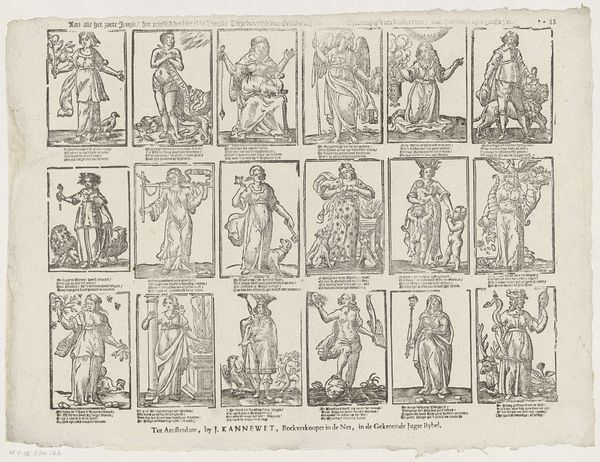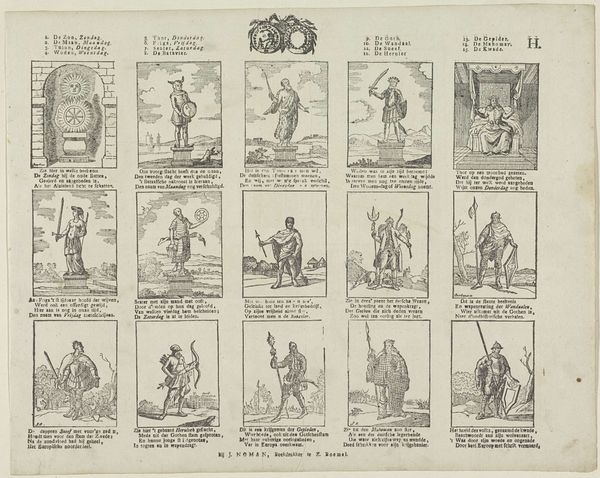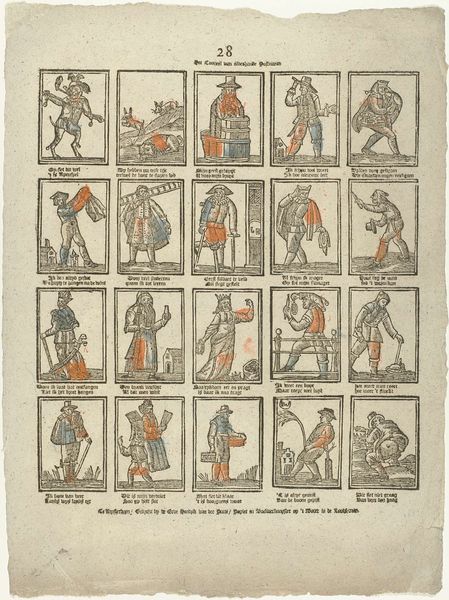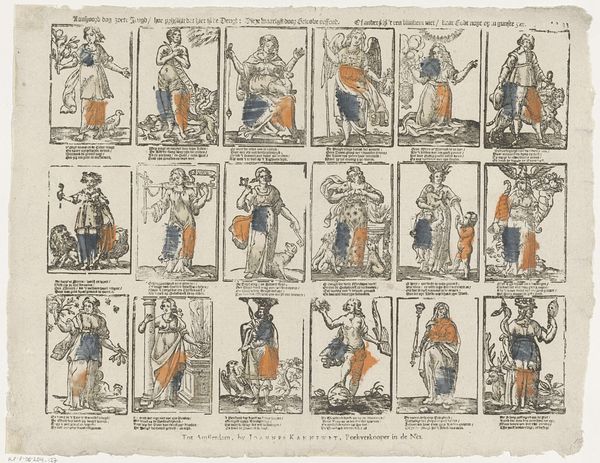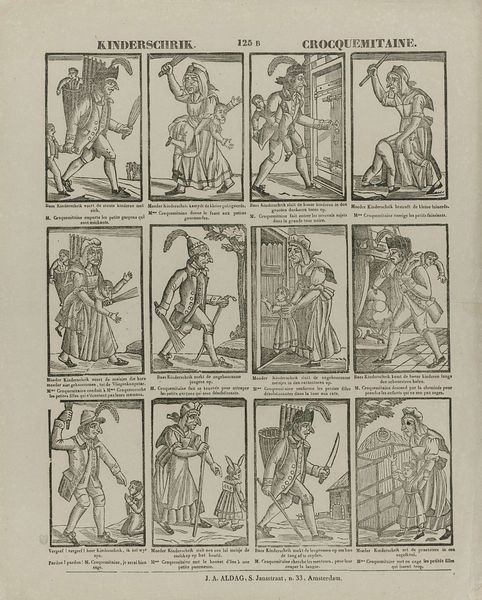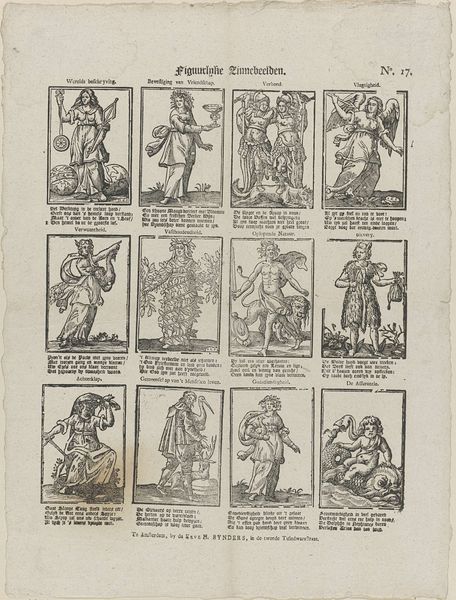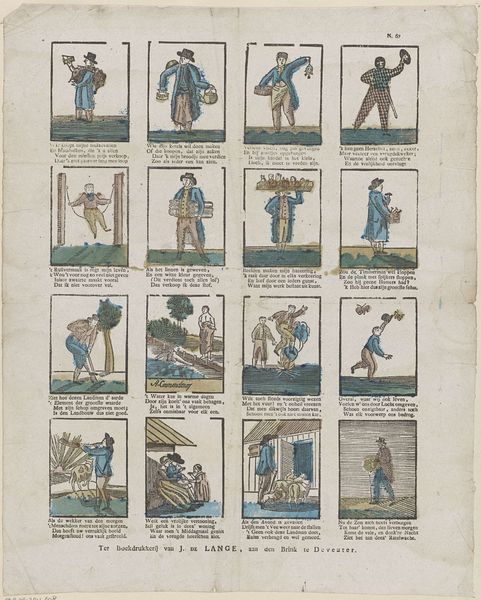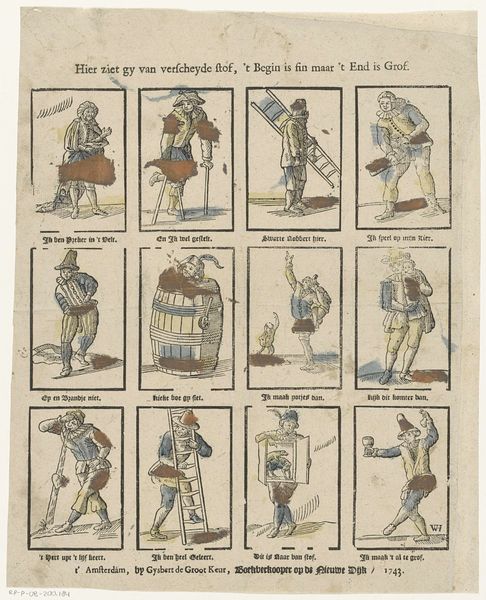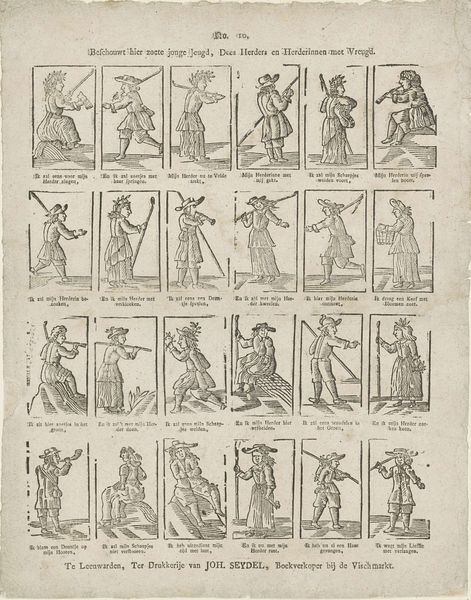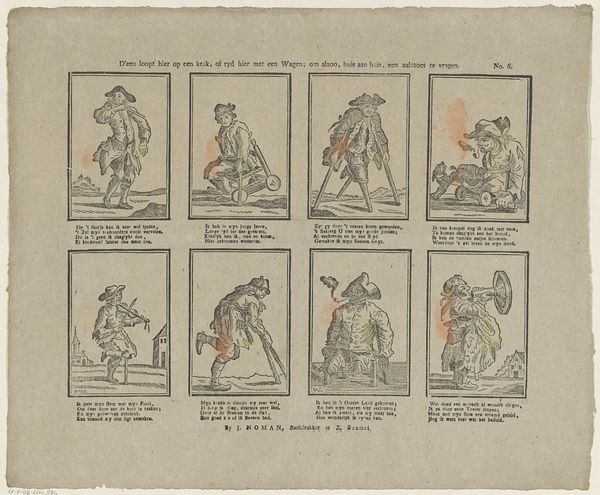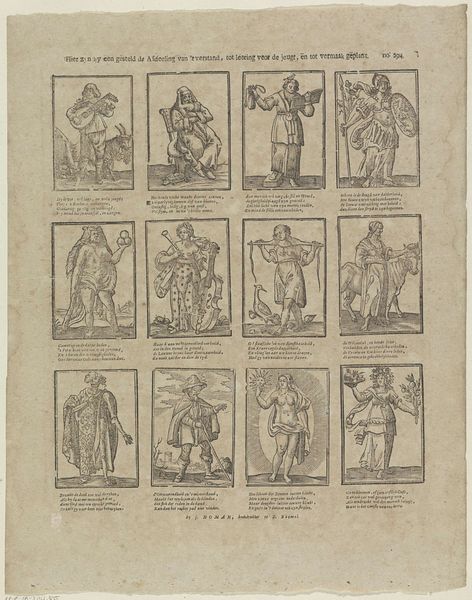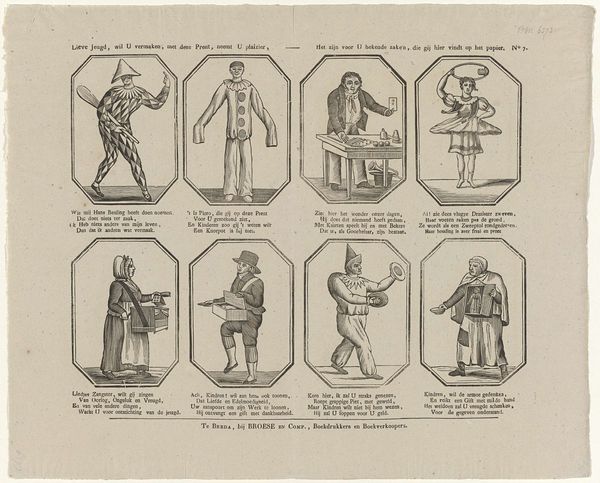
Op rijkdom / eer / of 's warelds staaten / Mag niemand zig geheel verlaaten 1767 - 1793
0:00
0:00
ervenhendrikvanderputte
Rijksmuseum
print, engraving
#
medieval
#
narrative-art
# print
#
old engraving style
#
figuration
#
genre-painting
#
history-painting
#
engraving
Dimensions: height 310 mm, width 415 mm
Copyright: Rijks Museum: Open Domain
Curator: I'm struck by the straightforward nature of this print; it reminds me a little of a medieval woodcut in its style. Something about the clear lines against the creamy paper suggests old stories simply told. What do you make of it? Editor: It feels moralizing, doesn't it? We’re looking at an engraving dating, we think, from somewhere between 1767 and 1793. The title, printed at the top, reads: "Op rijkdom / eer / of 's warelds staaten / Mag niemand zig geheel verlaaten," which roughly translates to: "On riches / honor / or worldly estates / May no one rely entirely." Each little tableau offers a lesson. Curator: A cautionary one! Like little stages. The figures are neatly compartmentalized. A nobleman gestures grandly. A merchant hoards his coins. Each encapsulated within a little box, yet together hinting at life's transience, like a pre-Instagram morality reel! And below each figure, a pithy saying. They were obviously really working at democratizing visual communication even back then. Editor: It’s an interesting reflection on society's relationship with material wealth, really. Considering its distribution, accessibility—and perceived spiritual value, I wonder about its broader function at the time, how audiences used or read them… Where these affordable reflections to keep and put away in a family bible? What was its route, or market? Curator: Ah, the burning question for us historians: the "who, what, when, where, why, and how" of its cultural transit. Yet, as a creative I'm instantly thinking of a series of eight embroidered panels! Just thinking about it... eight interpretations of ways we are undone! Oh the possibilities of color. Editor: Ha! And for me I suddenly see this in contrast to more lavish prints, made for wealthier homes and audiences: as the era went on, more accessibly priced visual arts had potential for spreading a new socio-political conscience. Who knows if images such as these shaped ideas during those uncertain times, pre-revolution, too! Curator: It gives us a pause in reflecting about pre-cinematic storytelling, doesn't it? I do appreciate its message in being reminded to re-consider material and temporal investments. And as an artist, too, I see opportunities for reinvention! Editor: Indeed, quite so. Its historical implications regarding political impact are quite suggestive and valuable.
Comments
No comments
Be the first to comment and join the conversation on the ultimate creative platform.
